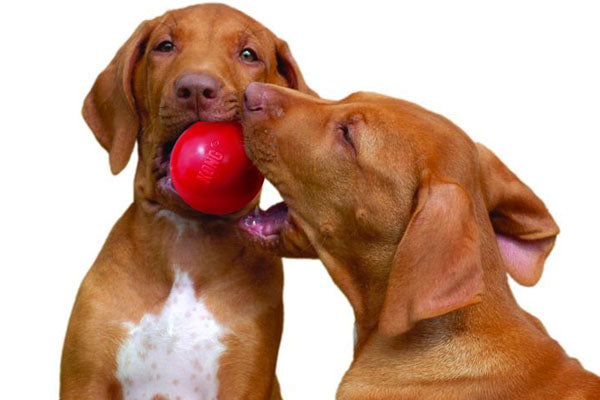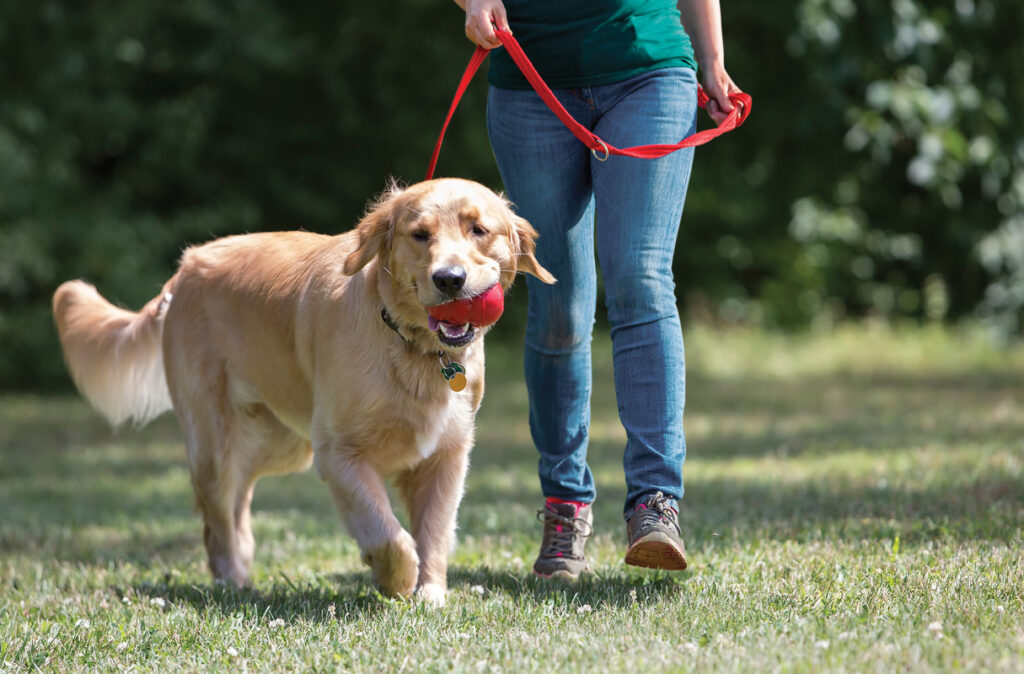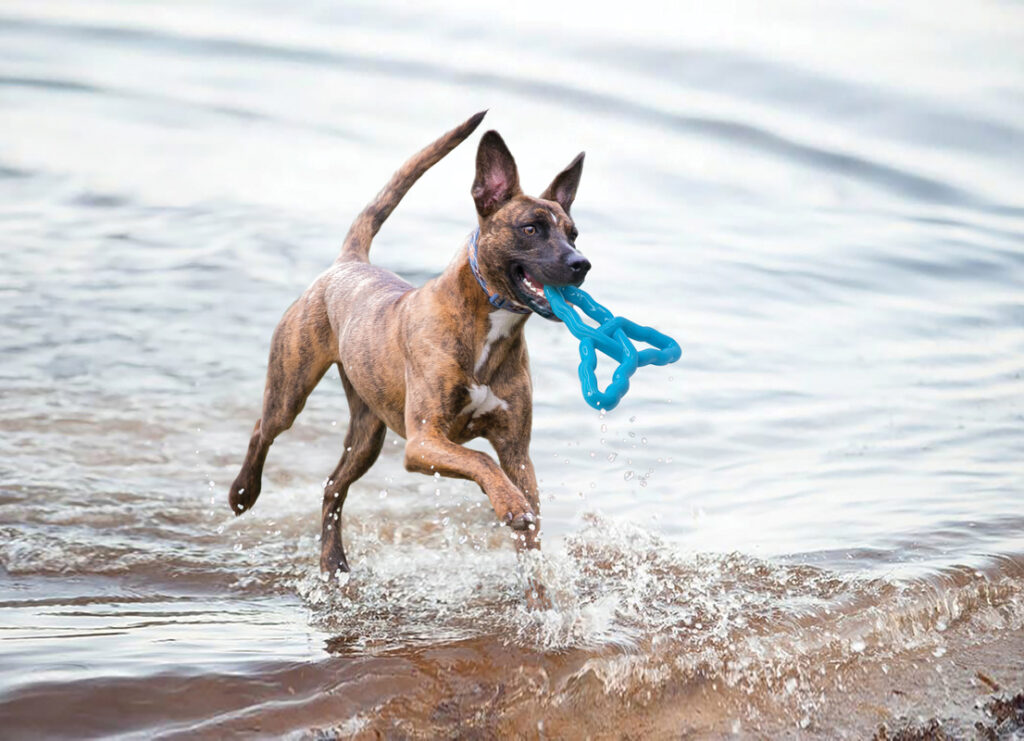Whether they’re on their routine walk or at their favorite tail-wagging dog park, dogs love to socialize. It helps them understand the world and how to react to their environment. More so, it’s a great way to have fun. From friendly wrestling to breathless chases, dogs have a variety of healthy ways to interact and play. Roughhousing is usually part of the harmless fun, but sometimes, it can become dangerous if a pup takes it too far. Before some innocent playtime lands your four-legged companion at the emergency vet, learn how to identify the signs of aggressive behavior.
When It’s All Fun and Games
Don’t put a halt to your pooch’s fun just yet. If you see any of these friendly signals during a doggy play date, you’re good to go.
Play bow: If your dog drops their front legs to the ground and puts their back end in the air, they’re ready to play. Be sure to grab a KONG toy for a lively game of fetch.
Tail wag: Dogs wag their tails to communicate with humans and other pups. Often a friendly greeting or an expression of excitement, a wagging tag is a good sign when it comes to playtime.
Darting back and forth: Tag, you’re it! Canines love to take turns, especially when it involves chasing each other. Venture off to the nearest dog park so your doggo can enjoy a good frolic with friends.
Relaxed mouth: When your pup has bright eyes and a comfortable, open mouth, you know they’re happy. Fido will be all smiles once he beats you at tug of war.
When It’s Aggressive Play
While fun at first, play fighting and biting can escalate quickly. To prevent playtime from getting too rough, be on the lookout for these warning signs.
Stiffness: Body language is always telling. Whenever your pooch is feeling stressed or tense, they’ll likely appear rigid and stiff-legged.
Freezing: Similar to stiffness, your canine freezing could be a sign that they’re nervous. Even though it doesn’t seem confrontational, the visual cue is just as cautionary and alarming.
Direct Stare: When your furry companion intensely watches another dog, that’s an indicator they might pounce. Try to distract them before they have a chance to become aggressive.
Snarling: Often confused with growling, a lip snarl, along with other muzzle movements, could mean your doggo is uncomfortable. When a dog shows his ferocious teeth, you know there might be trouble.
Growling: While reasonably common during some competitive play, growling can be a signal for something more. If your pup is loose and relaxed, you’re in the clear. If the growl is deep-toned, though, or follows any of the other warning signs, you’ll want to interfere before things get out of hand.
Displaying aggressive behavior does not automatically make your furry friend an aggressive dog. Some circumstances even call for a little bit of aggression. For example, a mother canine growling at her puppy for misbehaving is appropriate in context. It would be a different story if she were to bite or hurt the pup.
Any of these behaviors could stem from anxiety, fear, conflict, or pain. If a dog becomes territorial over toys or food, try and separate them before they go after other doggos. Redirected aggression is possible too, so when the roughhousing goes a little too far, make sure you’re careful when intervening.
Treating Aggressive Behavior
If your dog is on the aggressive side, don’t give up hope. That kind of behavior is treatable, but it’s much easier to prevent aggression than it is to correct it. One of the best ways to do this is by socializing your pup early on. Reach out to the Pet Coaches and Trainers in your KONG Club app to create a Personalized Pet Plan for your dog’s behavior.
Have you already planned your doggy play dates? Elevate your trusted companion’s get-togethers with a subscription to KONG Club,



